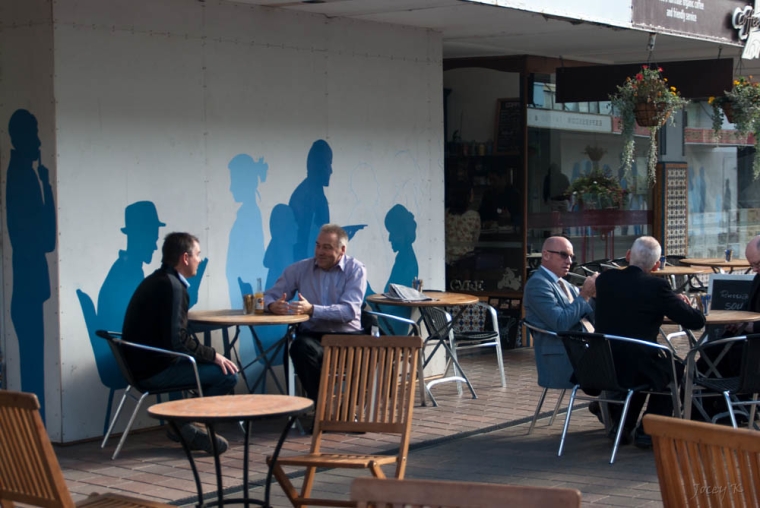
Westpac has moved to cap contactless payment surcharges, asking terminal provider Verifone to hold them to 1.59%.
The Commerce Commission brought in a pricing standard for contactless payment surcharges in November after the Retail Payments Act passed, giving the Commission the ability to regulate payments.
Now, Westpac appears to have found what Commerce Commission chairman John Small said is a “tidy, technological fix” to solve the surcharge issue, by capping the amount that can be charged through a terminal.
Westpac’s General Manager of Product, Sustainability and Marketing, Sarah Hearn, said the bank had asked Verifone to cap contactless surcharges on all new Westpac terminals on its network at a maximum fee of 1.59%.
Hearn said the terminal cap would help to ensure merchants weren’t “passing on fees to customers that are higher than costs”.
Concern that bank interchange fees for Visa and Mastercard contactless payments were too high and had become a profit centre, saw the Commission introduce the standard to limit bank charges for card payments through the two networks.
The standard means that total interchange fees for credit retail payment networks must not exceed the lower of either 0.80% per transaction or the interchange fees per transaction as at 1 April 2021.
Hearn said in the next few months Westpac would be making changes to its customers’ statements to include their average merchant service fee for all transactions that month.
She said this would provide greater transparency and a better understanding of merchant costs.
Hearn said Westpac introduced a simplified merchant service fee structure for small businesses in October 2022, in advance of the Commerce Commission legislation capping domestic interchange rates in November.
“This includes the option of a flat fee of 0.69% on contactless debit transactions and 1.59% for credit card transactions. We believe this is leading to cost savings for the majority of our small business customers.”
Small said Westpac’s terminal cap was an effective way to hold surcharges down.
“Not all terminal providers are on board with that. But [terminal capping] is a potential way that we could actually solve the problem, if that was uniform. It could completely solve the problem.”
Small said he hoped widespread industry adoption of capping is “where we end up”.
There was only so much that could be achieved by the Commission reporting on surcharges, he said.
The Commission recently sent out compulsory notices requesting information from Visa and Mastercard about interchange fees to ensure compliance with the new standard.
It had also written to large businesses such as Air New Zealand, One NZ and 2degrees to ask them to slash online payment surcharges. 2degrees had committed to dropping its online payment surcharges, but Air New Zealand and One NZ (formerly Vodafone) had not.
The Commission said it had received 120 complaints about surcharging for specific payment types since November 2022.
Small said the Commission could also require merchants to display signs clearly outlining how much they would charge customers for different payment types.
Worldline Head of Public Affairs, Julia Nicol, said some merchants were still charging more than the Commission expected.
She said the Commission expected surcharges through the credit card networks would be 1.5% and 0.7% through the debit network.
“If retailers don’t start changing then maybe the Commerce Commission will put something more in place.”
Worldline, which used to be known as Paymark, provides payment terminals, operates the Eftpos payment network and also offers online Eftpos.
Nicol said Worldline could potentially put surcharging caps in place through its network if the Commission decided it wanted to do that.
“As a consumer, I'd be quite happy about that because then I know what to expect. If I use a contactless debit card, I know how much it's going to be, and if I use that credit card, I know it'll be another amount. I think that that will help consumers. At the moment, consumers feel like they're being ripped off by some of these surcharges.”
The Government estimated regulating bank interchange fees on Visa and Mastercard transactions would save New Zealand businesses around $74 million a year.
Banks earn interchange fees on Visa and Mastercard contactless payments, with the merchant’s bank paying fees to a cardholder’s bank for accepting tap-and-go electronic card payments.
A Reserve Bank of New Zealand report from 2022 found banks were earning more than $400 million annually from debit and credit card payments made through the Visa and Mastercard networks.
The central bank said while other fees income for banks had dropped, banks’ income from card payment fees through Visa and Mastercard had grown in recent years.

We welcome your comments below. If you are not already registered, please register to comment
Remember we welcome robust, respectful and insightful debate. We don't welcome abusive or defamatory comments and will de-register those repeatedly making such comments. Our current comment policy is here.